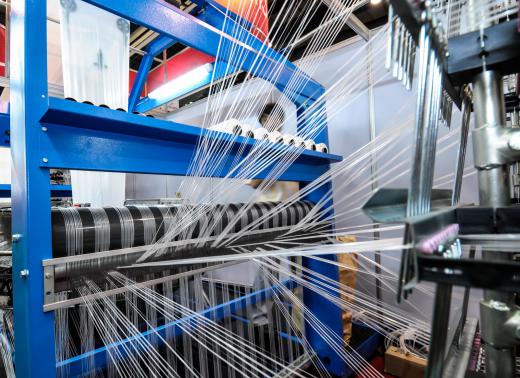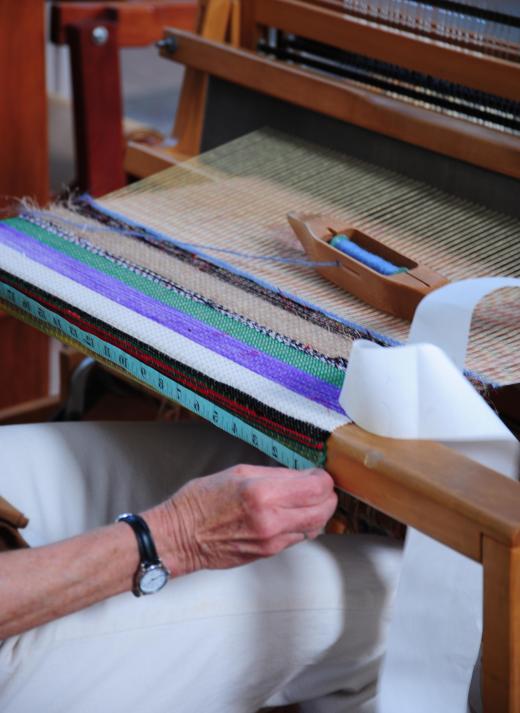A loom is a tool used for weaving yarn into textiles. There are many types of looms, including the hand loom, frame loom, and shuttle loom. A power loom, yet another type of loom, is a mechanized tool that uses a drive shaft for power. Invented by Edmund Cartwright in Great Britain in 1784, the power loom allowed manufacturers to create textiles much more quickly than with hand-driven looms. This improvement helped the power loom become one of the defining machines of the industrial revolution.
A loom works by holding lengthwise threads, called the warp, under tension. The vertically-oriented threads are attached to two or more harnesses which move up and down, separating warp threads from each other and creating a space called the shed. Another thread, called the weft, is wound onto spools called bobbins, which are placed in a shuttle and passed through the shed, which creates the weave. In the early 20th century, the shuttleless loom, also known as the rapier loom, was invented. This type of power loom moves the weft through the shed using jets of air or water, steel rods, or a dummy shuttle that leaves a trail of yarn rather than using a weft.

The Jacquard Loom, introduced around 1803, used punch cards to allow the loom to create complex patterns in the weave, and is seen as a precursor to concepts of computer programming. A series of inventors made other improvements, culminating with the Lancashire Loom, a semi-automatic loom invented by James Bullough and William Kenworthy in 1842. The Lancashire Loom produced a higher quality cloth for less cost than hand weaving, and was widely used into the 20th century.

The development of power looms in the early 19th century was a major driver of the Luddite movement, as some British artisans feared their livelihoods would be destroyed by the new technology. Wages in the textile industry dropped, and more lower-skilled workers were hired to run looms. Luddites protested by destroying looms and wool and cotton mills. In 1812, the British government passed the Frame Breaking Act, which made industrial sabotage punishable by death. A number of executions took place in 1812, and sporadic violence continued, but the movement ceased activity in Britain by 1817.

The power loom was brought to the United States in 1813 by Francis Cabot Lowell, who memorized plans for the machine because export of the technology from Great Britain was illegal. Lowell worked with Paul Moody to make additions and improvements to the power loom, and in 1814 established the Boston Manufacturing Company mill in Waltham, Massachusetts, the first textile mill in America to combine all actions for turning raw cotton into cloth under one roof.
While power looms are mechanized looms, the source of the power that allows them to operate varies. Originally these looms were powered by water, but after some time that morphed into steam power and eventually air powered and electricity powered looms were created.
